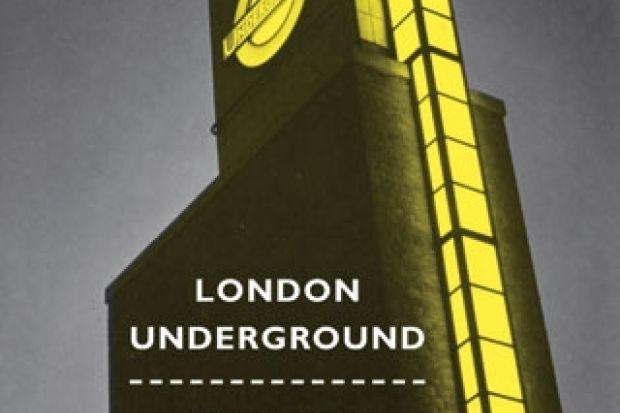The map of the London Underground, which even today is based largely on Harry Beck’s 1933 design, is like no other map of London. At once metaphorical and practical, it guides us effectively around the system but bears little relation to the city above or even the real spatial relations between stations. Any commuter trying to make his or her way home on foot after a strike or an emergency has brought the network to a halt would be ill-advised to use it as a guide.
The gap between ways of travel on the surface and the subterranean experience of the Underground, the disjunction between the topography of the land and travel beneath it, and the reactions to them are the main themes of this book. David Ashford argues that the Underground reconceptualised space and created “abstract spaces of circulation, tied ineffectually to the metropolis above with the inadequate written and spoken messages provided by the railway companies”. Perhaps, but the Tube was also, more mundanely, a sensible solution to the challenge of travel in a crowded city.
Before the Underground, the railways had already modified the space and the relationship between towns, while the train timetables had demanded a new standardisation of time throughout Britain. Early Victorians worried about the social and even the physical effects of railways, but Ashford rather overestimates these concerns: travellers and society soon adapted, as the comfortable bustle of W. P. Frith’s 1862 painting The Railway Station demonstrates.
Travel underground, however, represented a new and more disturbing challenge. Following the introduction in 1863 of the Metropolitan Railway’s Paddington to Farringdon line, with its steam engines travelling on rails only just under the surface, the Underground expanded rapidly. By the end of the 19th century, a network of lines, some of them deep-bored, like the Central London Railway, the “Twopenny Tube”, had transformed London’s transport system and the daily lives of thousands.
A strength of Ashford’s study is his account of literary and artistic responses to the new experience of underground travel. Was this some new hell into which travellers had to descend, or the birth of a modern and brave new world? Was it a threat to humanity, as man became dependent on machinery and on a system, or a liberating experience, especially for the middle-class women who were soon using it to travel independently around the capital? What struck many writers was the lack of social interaction. Too many and too transient fellow travellers brought with them the feeling of solitude among a crowd – although this very solitude, some argued, provided time for reflection.
On the whole, debate over the impact of the Underground divided writers and artists along predictable lines, with Modernists enthusiastic and conservatives perturbed by the social, psychological and aesthetic changes it brought. Ashford describes the diverse reactions and points to the delight with the speed of the new form of transport expressed by the Italian Futurist Filippo Marinetti, and the way the Underground could be seen as the essential mechanical framework for the modern city.
Both the architecture of Tube stations and the network’s ubiquitous posters, so much a part of every journey, reflected Vorticist and other avant-garde influences, while administrators commissioned sculptures by Henry Moore and Jacob Epstein for London Underground administrative buildings. The irony, of course, is that the Tube not only brought people into and through central London, but out of it. The posters that famously encouraged travellers to “Come and Live in Metroland” at the leafy further reaches of the Metropolitan Line played a part in the development of the suburbia so detested by the avant-garde and only rescued from condescension by John Betjeman.
This book is much like the proverbial curate’s egg: fascinating chapters on the reactions to the Underground and on literary treatments of it are followed by a loss of focus in later chapters in which a melange of subjects, mainly counter-cultural and only vaguely related to the ostensible subject, are discussed in the strangulated pretensions of cultural theory-speak, as with: “The urban aesthetic that Banksy’s art participates in represents the subsumption of antithetical energies in the dominant spatial concept, in order to produce a new synthesis that is structured around a binary opposition.” I bet that’s what you always thought.
